Content
For any gardener, vegetable grower or just an amateur farmer, physical labor on a favorite site is not an easy goal in itself. Each of them strives to get a certain result from it. It can be an unprecedented harvest per unit area or a unique size of a vegetable, berry or root crop. But there may be an unprecedented plant for this region, cultivated somewhere in the vastness of Africa or South America.
But when several similar options coincide - yield and size, early maturity and yield, taste and uniqueness of the variety, there is no limit to the pride of the gardener. None of this happens when it comes to red eggplant. As a vegetable, it is unpresentable and low-yield. Few people like its taste. The only thing that this eggplant gives off is that it is red and at the same time it is an eggplant.
How to grow
The common eggplant (Solanum melongena) is a perennial plant in Africa or India. In the harsh conditions of the local climate, it is grown as a purple-colored annual vegetable. And when people, among themselves, talk about eggplant color, they mean exactly these color tones. It is not for nothing that its unofficial name - "blue" is no less popular than just eggplant. The plant is cultivated because of its excellent taste and excellent yield.
The eggplant bush during fruiting is an indescribable sight. Up to 10 most beautiful fruits weighing up to 500 g and more than 300 mm long. few will leave indifferent. In order to get such a harvest of eggplant as early as possible, you need to work hard. After all, eggplants of any color and decorativeness are still southerners. During the period of their active growth and fruiting, which is about 100 - 130 days, eggplants are quite capricious and demanding on growing conditions:
- the growth temperature of plants should be within 240 — 270... This means that the seedling method of growing eggplant cannot be avoided;
- the soil should be moist and rich in nitrogen;
- excessive air humidity is unacceptable. Regular airing is required;
- daylight hours - maximum duration without shading;
- due to the large weight of the crop - the garter of the plant bushes is required. This is especially true for varieties with a bush height of more than 500 mm.
But if the eggplant is red
For a vegetable grower, all plants are like children. It doesn't matter what race they are, skin color and what genes they have. All of them need care and love. They can be weak from birth, strong in their genetic abilities, or painful due to poor acclimatization. Only the attention and love of parents will make them healthy and happy in the future.
This is also the case with red eggplants, but this is Solanum aethiopicum. In other words, Ethiopian nightshade. These are the usual "blue", but not eggplant color. Although nature created them red, they are the same eggplants, with all the nuances of their cultivation. These plants are as delicate as their purple cousins. Likewise, they love warmth, water and light. They love fertile soil and warm watering at the root. But they did not quite succeed in taste and yield. But how beautiful.
Choosing a red eggplant variety is easy.
Ease of choice is associated not so much with the quality indicators of the variety, but with the scarcity of choice. And the choice itself is not made with the aim of dwelling on a variety that guarantees an unprecedented harvest or ultra-short fruiting periods, but with the aim of growing a rare and beautiful plant with red eggplants. There are several such varieties of eggplant, excluding the seeds offered by Aliexpress:
"Red Raffeld"
Medium-tall shrub, without thorns up to 500 mm high. The plant is self-pollinated with flowers located in the axils of slightly pubescent leaves. Their size is close to that of tomato flowers. The ripening period of the fruit reaches 140 days. Round fruit eggplant collected in compact brushes. In each of the brushes, up to 7 pieces of eggplant are formed, with a constant growth of new copies. The weight of each fruit does not exceed 100 g. As it grows, it changes color from green to red. Has a smooth, shiny skin and familiar eggplant flavor. As it ripens, the degree of bitterness increases.
"Japanese red"
It has bushes of medium height, reaching 800 mm. in greenhouse conditions. The plant has no thorns, and the leaves are slightly pubescent. Flowers are located in the axils of the leaves, similar in size to tomato flowers - self-pollinated. After pollination, it forms clusters of 7 eggplants. Fruit ripening occurs sequentially. They are as large as tomatoes and weigh no more than 100g.
When ripe, the fruits change color from green to orange and then to red. The eggplant pulp has a pleasant yellowish color, light eggplant flavor. Cooking is possible in the same way as for ordinary blue ones.
"Chinese Lantern"
Small, compact bush up to 800 mm high. The plant has a long flowering - until the end of summer. The flowers are beautiful, star-shaped and large enough. The fruits of the plant resemble Chinese lanterns and are similar to tomatoes. He is a great lover of sunny, unshaded places.
It is planted with seedlings at the end of May. The March shoots of the plant can be obtained 2 weeks after planting. Prefers light humus soils;
"Dandy"
Small (up to 400 mm.), Strongly branched bush with a dense, strong crown. The plant is distinguished by its great endurance and stress resistance. It easily tolerates slight shading. Withstands well the conditions of winter gardens and confined containers and vases. The plant bears fruit in small, bright red rounded eggplants.
The bitterness of an eggplant changes as the fruit ripens. Each grower chooses a sufficient degree of crop maturity for himself.
Seedlings are the basis for a beautiful plant and a good harvest
Like all eggplants, the red variety also has a very long growing season. To calculate the period of likely planting of plants, more than 115 days should be counted from the desired time of obtaining fruits. Therefore, the schedule for the cultivation of red eggplant will look like this:
- selection of seeds, preparation and germination - the last days of February or the first days of March;
- planting seeds - early March;
- the appearance of the first shoots of the plant, hardening, culling and growing healthy seedlings - the end of March;
- feeding, adherence to temperature and light conditions - April;
- transplanting plants into larger containers - April;
- preparation of places for permanent cultivation of red eggplants and the acquisition of covering material - mid-May;
- moving to a permanent place of growing plants and their transplantation, shelter and ensuring a dignified existence.
It is necessary to compare the possible climatic conditions during transplantation and the degree of development of seedlings by this time. But in any case, the seedlings should not be less than 75 days old.
Conclusion
The presence of varietal diversity of plants in a cultivated garden is not only a guaranteed yield of various crops. It is also a source of pride for a vegetable grower and the white envy of neighbors. At the same time, the bright bushes of Chinese lanterns will once again remind that man does not live by bread alone.
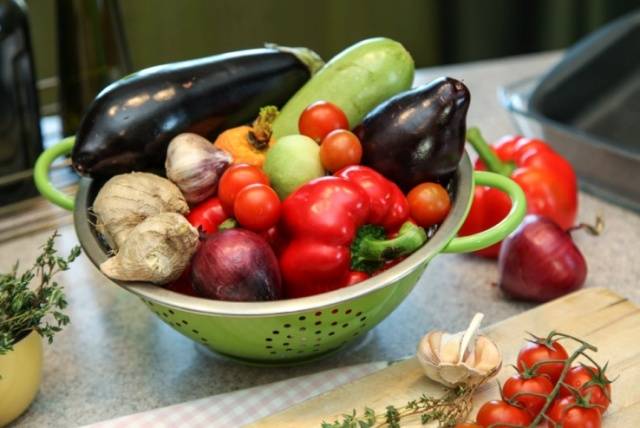
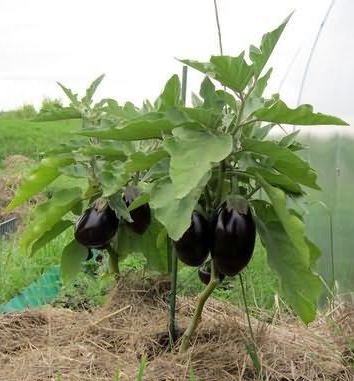
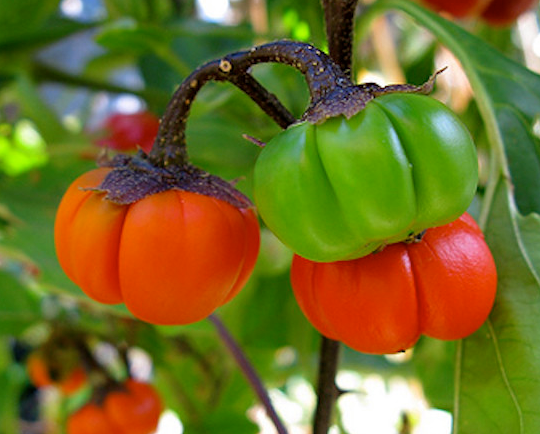
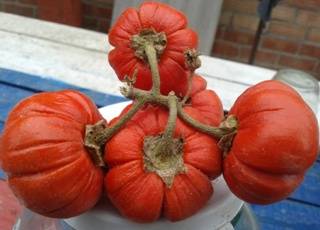
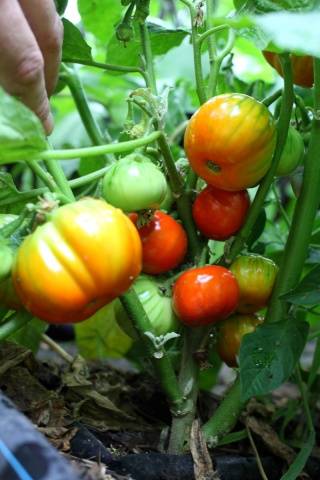
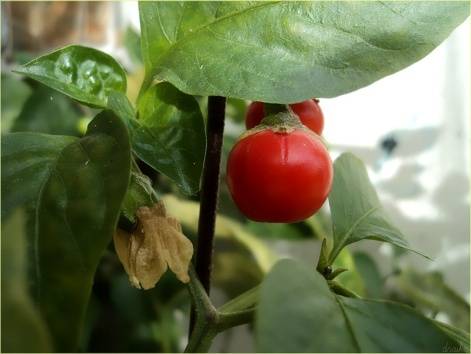
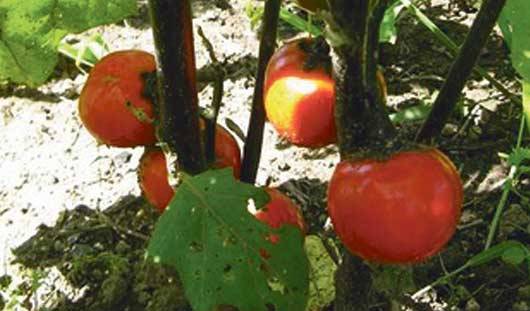
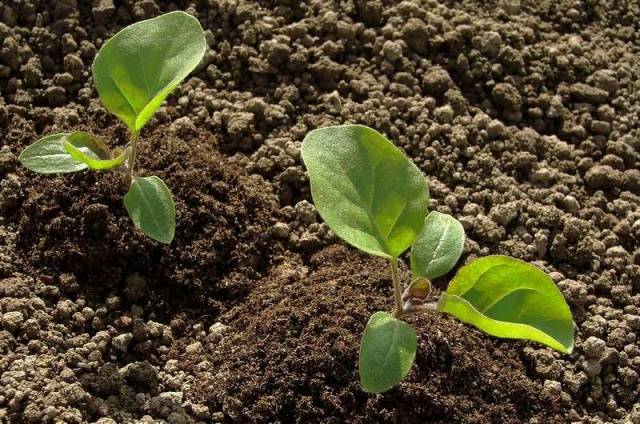
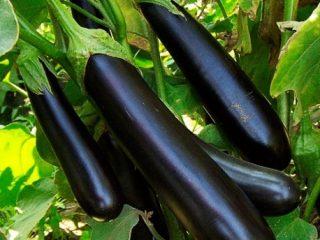








Good afternoon, I read your article, very interesting.
This year I planted "Red Ruffled" for the first time, three gorgeous bushes have grown, fruitful. But now the frost has begun and I had to pick the green eggplants. Can you please tell me what to do with them? Is it possible to cook something from them (for example, caviar)?